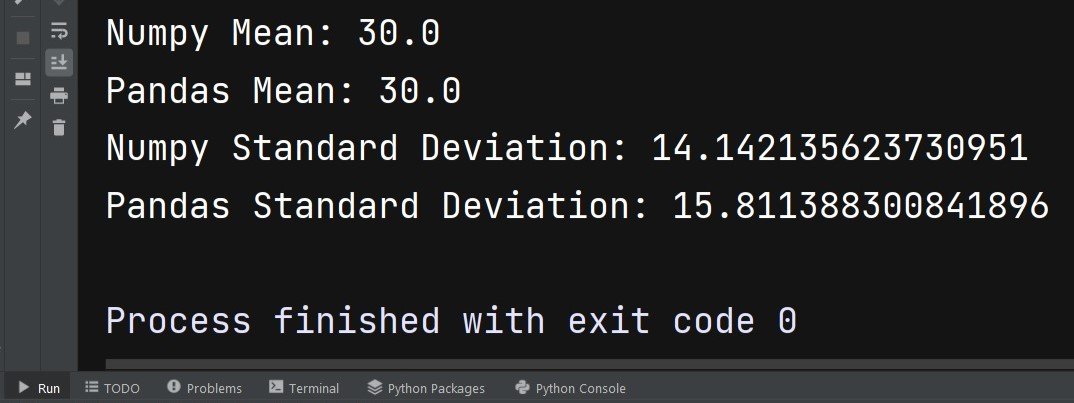In this article we want to talk about Numpy vs Pandas and also Which one to use in Python? Python offers different and powerful libraries for data manipulation and analysis, and two popular ones are Numpy and Pandas. Numpy is primarily focused on numerical operations and array manipulation, while Pandas provides high level data structures and functions for working with structured data. In this article we want to compare Numpy and Pandas together.
- Numpy: Efficient Numerical Computing and Array Manipulation: Numpy is a fundamental library for numerical computing in Python. Numpy provide multidimensional arrays (ndarrays) and different mathematical functions optimized for efficient computation. Numpy key features include:
a. ndarrays: Numpy ndarrays are highly efficient and allow for fast vectorized operations. They provide a homogeneous data structure that is ideal for numerical computations.
b. Mathematical Functions: Numpy offers different collection of mathematical functions, such as trigonometric, logarithmic and statistical functions. These functions operate element wise on arrays.
c. Array Manipulation: Numpy provides functions for reshaping, slicing and indexing arrays, and it enables flexible data manipulation. It also supports broadcasting, that allows operations on arrays with different shapes.
- Pandas: Data Manipulation and Analysis Library: Pandas is built on top of Numpy and provides high level data structures and functions designed for data analysis and manipulation. These are key features of Pandas:
a. DataFrame: The DataFrame is Pandas primary data structure, and it offers a tabular and flexible representation of structured data. It provides labeled columns and supports heterogeneous data types, and this makes it suitable for handling real world datasets.
b. Data Manipulation: Pandas excels in data manipulation tasks, such as filtering, sorting, joining and grouping data. It provides easy functions and methods that simplify complex data operations, and it enables efficient data wrangling.
c. Missing Data Handling: Pandas offers robust mechanisms for handling missing data, and it allows you to fill, drop or interpolate missing values. This ensures data integrity and consistency in your analysis.
Which one to use in Python ?
When deciding between Numpy and Pandas, consider the following factors:
a. Numerical Operations: If you want to work on numerical computations, then Numpy is the best library. Because it offers efficient array operations, mathematical functions and optimized performance, and it is suitable for tasks like linear algebra, numerical simulations and scientific computing.
b. Structured Data Analysis: If you are working with structured data, such as CSV files or databases, Pandas provides higher level of abstraction with its DataFrame. It offers powerful data manipulation functions and allows for easy data exploration, transformation and analysis.
Let’s look at a practical example to compare Numpy and Pandas in calculating the mean and standard deviation of a dataset.
|
1 2 3 4 5 6 7 8 9 10 11 12 13 14 15 16 17 18 19 20 21 |
import numpy as np import pandas as pd # Create a Numpy array data = np.array([10, 20, 30, 40, 50]) # Calculate mean and standard deviation using Numpy mean_np = np.mean(data) std_np = np.std(data) # Create a Pandas Series series = pd.Series(data) # Calculate mean and standard deviation using Pandas mean_pd = series.mean() std_pd = series.std() print("Numpy Mean:", mean_np) print("Pandas Mean:", mean_pd) print("Numpy Standard Deviation:", std_np) print("Pandas Standard Deviation:", std_pd) |
In the above example, we have created a Numpy array data and a Pandas Series series containing the same data. after that we have calculated the mean and standard deviation using Numpy and Pandas. Both libraries produce the same results, but Pandas offers more easy syntax for working with structured data.
Run the code and this will be the result

Learn More on Python Numpy
Subscribe and Get Free Video Courses & Articles in your Email